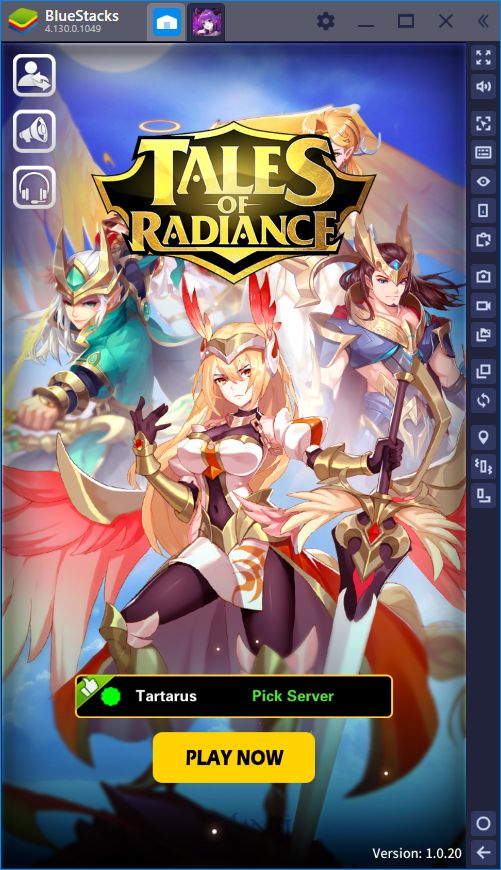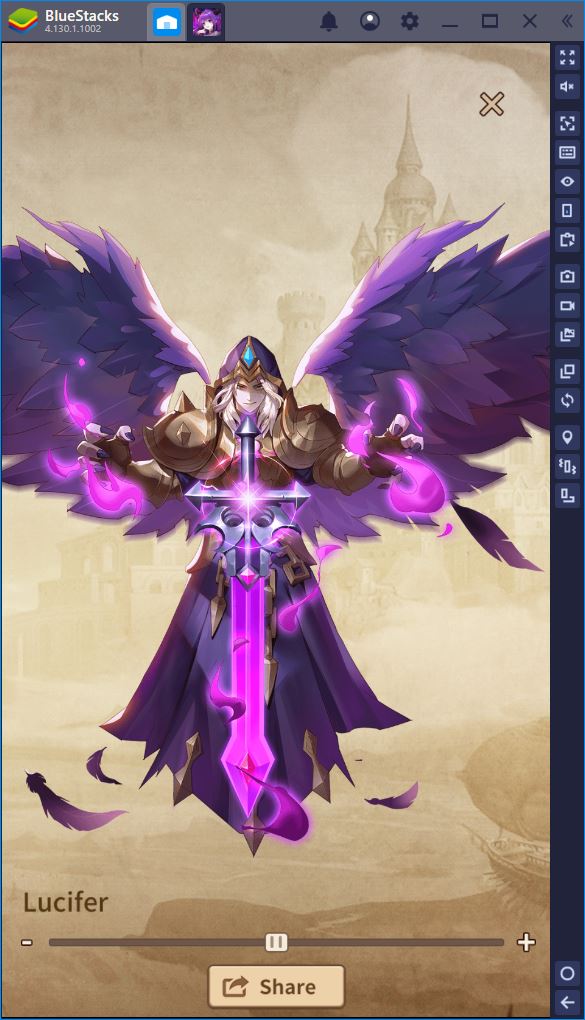Tales of Radiance on PC: The Complete Combat Guide for Beginners
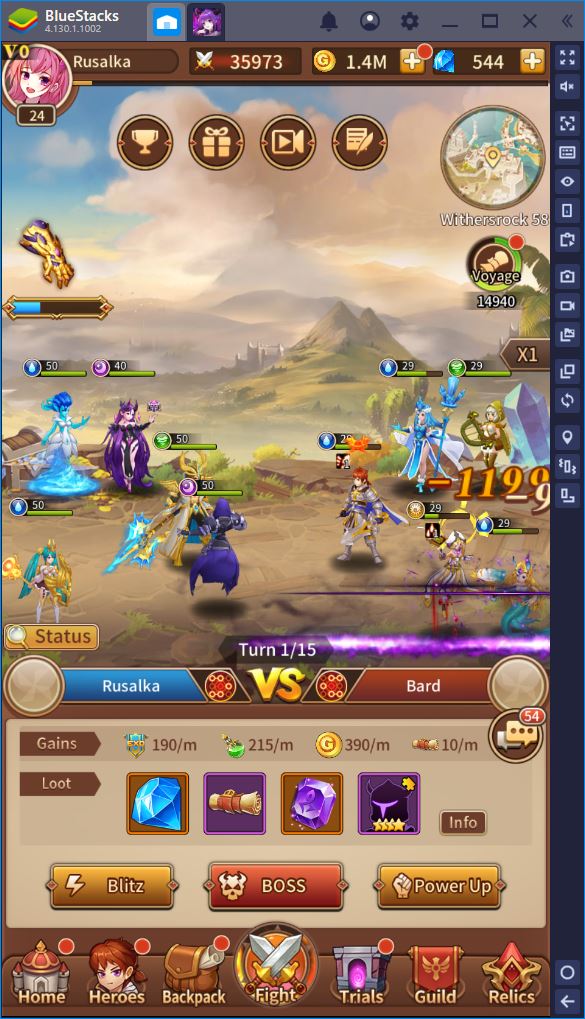
When you start a new game in Tales of Radiance, you don’t have to put up with any storytelling shenanigans. You’re given a couple of hero pulls and thrown out into the world, where you have to get the hang of combat all on your own. Granted, your first few fights aren’t anything to write home about, but this changes once you hit level 20 and higher.
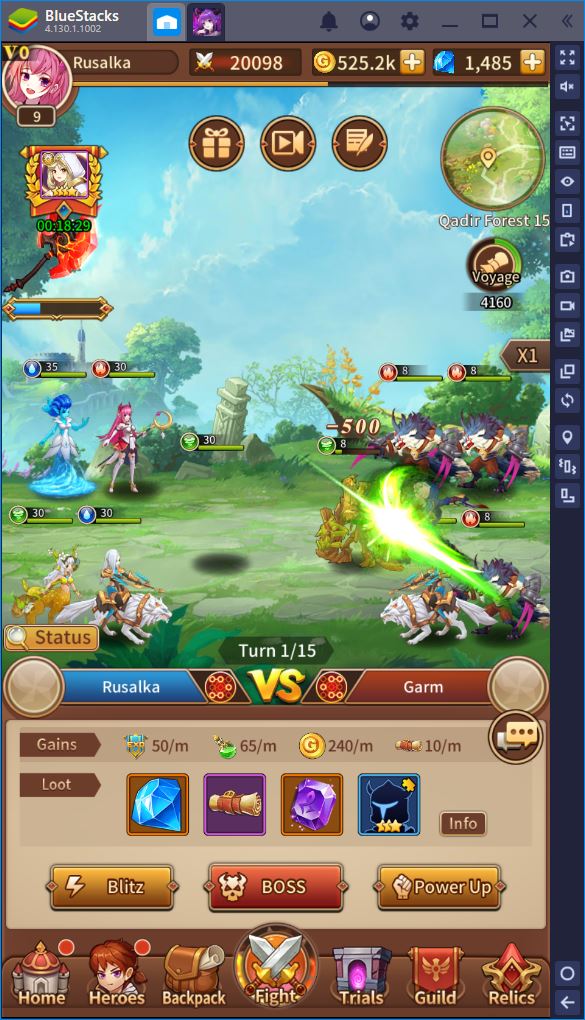
As bosses become tougher, what initially seems to be a fairly simplistic combat system becomes ever-more complex. Although you cannot control your heroes during the fights per se, you can nevertheless arrange them in such a way as to maximize their damage potential. You can also unlock different synergies, relics, and buffs that add a whole new level of tactical complexity to your battles. We’ve covered it all below.
Party Roles and Composition
In Tales of Radiance, heroes can fulfill one of the following four basic roles:
Tank
These are gods that must be bulky enough to protect the rest of your party from harm. They usually occupy the front row and have abilities that both damage opponents and heal/support allies.
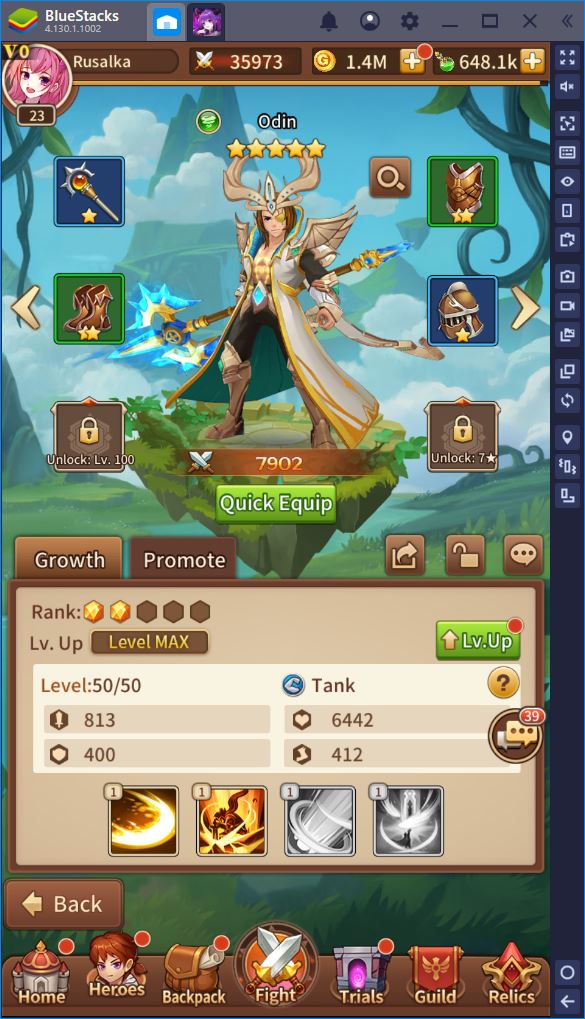
Support
These are heroes that take up the back line and dedicate most of their turns to buffing or healing their allies. Some support characters can also debuff heroes from the enemy team.
Mage
These characters essentially fulfill a DPS role, but this is split into two subcategories in Tales of Radiance. Mages usually feature abilities that deal AoE damage to all or some enemy heroes. Some of their abilities target the entire enemy team, while others target opponents in a given pattern (such as a straight line).
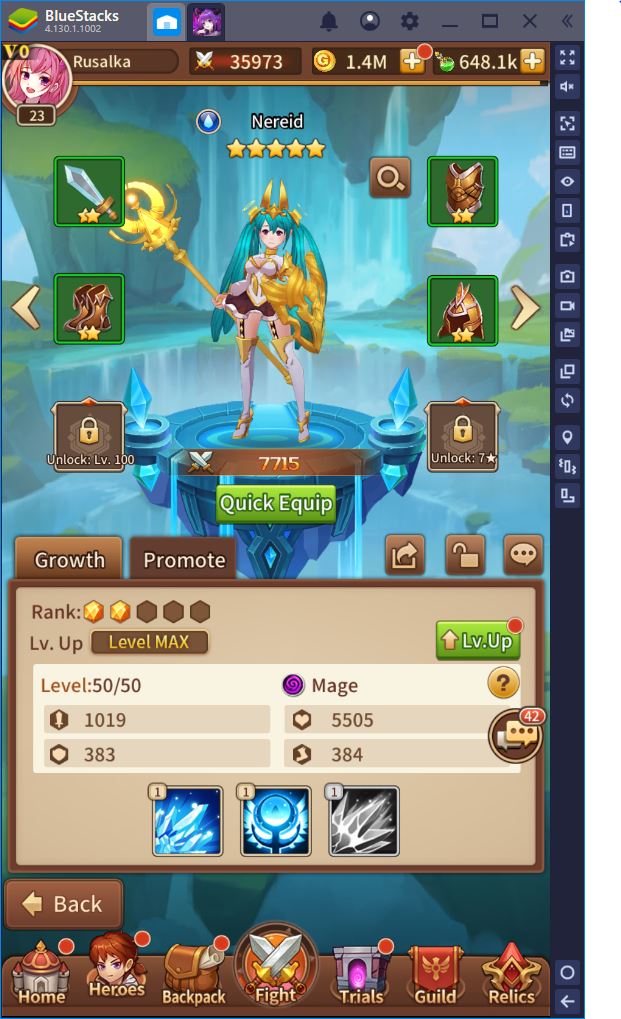
Fighter
This is the second DPS subcategory, which is different from the Mage in the sense that its abilities tend to target a single enemy. Although Fighters do not reach the same number of targets per hit, they deal significantly more damage with each ability, which makes them ideal to quickly take down tanky or very dangerous enemy heroes.
Play Tales of Radiance on BlueStacks
Probably the most commonly used party composition includes 1 Tank, 1 Support, 2 Mages, and 1 Fighter. However, different boss fights might require a different setup, so it’s always a good idea to experiment with multiple comps if you’re having a hard time in a particular battle.
Hero Elements and Synergies
Like in most Gacha games, heroes in Tales of Radiance each draw strength from a certain element. There are a total of 5 different elements, which include Wind, Water, Fire, Light, and Dark. Each element is strong against one other element and weak against another. This translates into higher or lower damage, so it’s an essential aspect to keep in mind during tough fights.

Wind is powerful against Water, but weak against Fire. Water is great against Fire, but weak against Wind, while Fire performs well against wind, but poorly against Water. Light and Dark are removed from this interaction, but deal more damage against one another.
In addition, when heroes in a party align with a certain configuration, a synergy is activated for additional boosts. For example, five Fire, Water, or Wind heroes grant +20% HP and +15% ATK, while five Light or Dark heroes grant an even better +30% HP and +20% ATK. You can consult the different possible compositions by clicking the “Synergies” button in the planning phase.
Party Formations
Another feature that makes battles more tactical in Tales of Radiance is that of party “formations”. These are gradually unlocked as you advance in levels and are especially useful during very difficult boss fights.
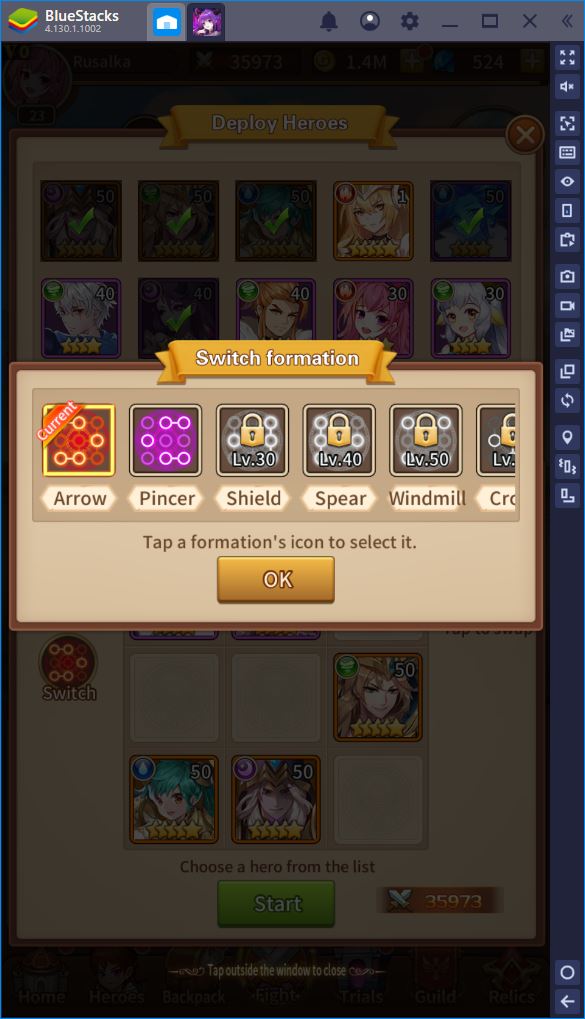
The first and most basic formation is referred to as the “Arrow”. It uses one slot in the front lane, 2 in the mid lane, and 2 in the back. As such, it allows the use of just 1 tank, with a combination of DPS and support behind the latter. Conversely, a formation such as the “Pincer” is more appropriate for hard-hitting bosses because it allows you to use two tanks on the front lane.
When you settle on a formation, always consider the specific characteristics of the boss you’re up against, as well as your own party composition. Don’t go with a “Shield” formation, for instance, if you don’t have 3 strong tanks ready to do battle.
Hero Abilities and Positioning
Most abilities of heroes across all the four roles specify how target(s) are selected. This is another aspect you should consider in relation to your party formation. Lucifer, for example, is a great 5-star DPS Mage, but his ability targets enemies only in a straight line. As such, he must be positioned on the row that allows him to reach the maximum number of opponents.

If this is the bottom or the top, you can use a formation such as the “Arrow”. If more enemies are on the mid row, however, Lucifer does better with a formation like “Shield” or “Spear”. It’s not just Mages that can benefit from correct positioning, either. Fighter abilities also target enemies based on the hero’s relative position to the enemy team, which means that you can arrange them in such a way as to tackle the tankiest or most dangerous opponent.
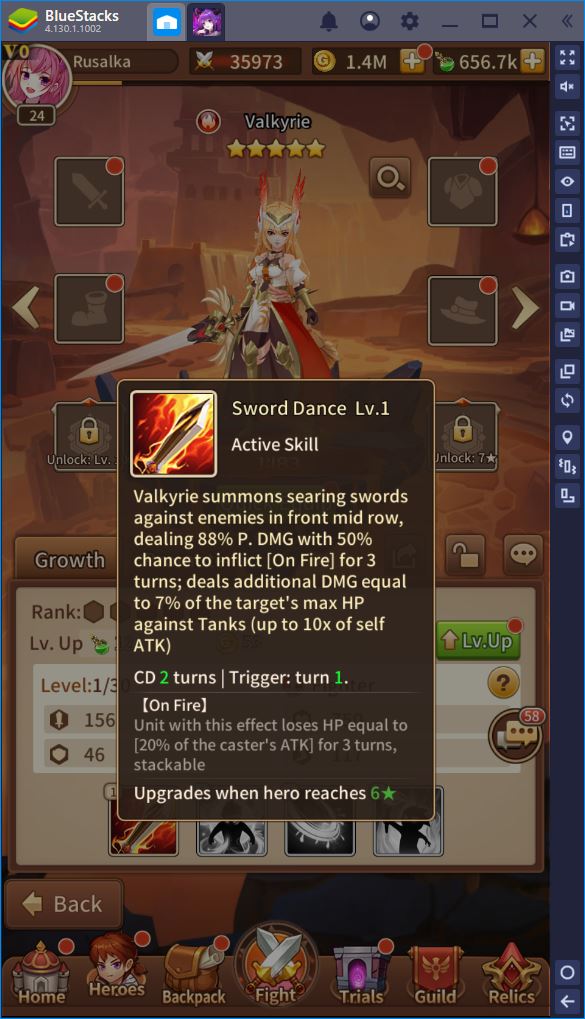
Relics, Buffs, and Debuffs
As you complete various challenges in Tales of Radiance, you can unlock and level several Relics with unique effects. These can be highly useful during battles because they not only deal significant damage to multiple targets, but they also apply a debuff.
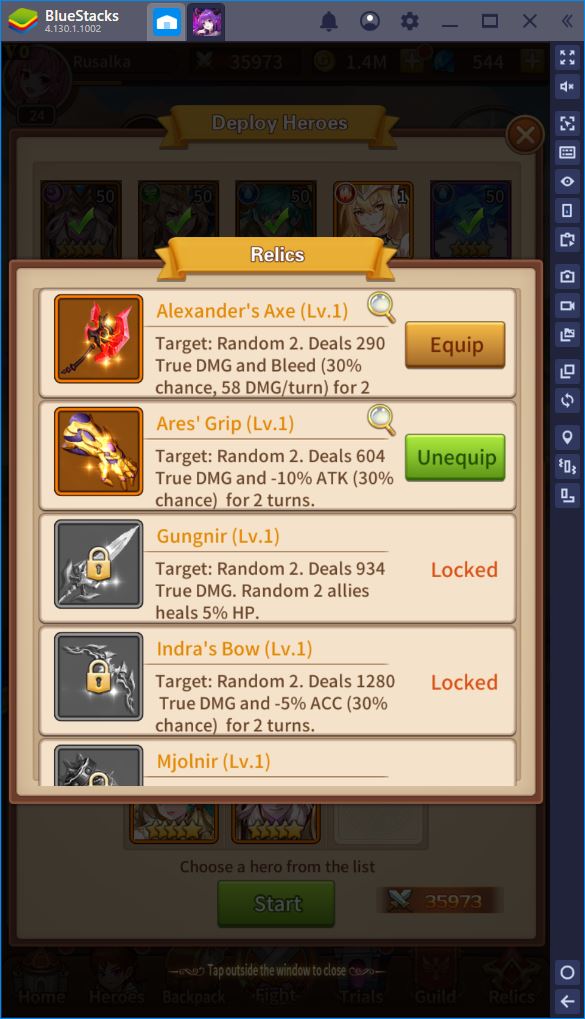
Ares’ Grip, for instance, is a relic that deals 604 True Damage to two random targets while also applying a -10% ATK for two turns. When levelled, this item boosts allies with +10% DEF, +10% DMG Resistance, and +40 Speed (at skill level 12). Pretty neat, especially when it goes off several times per battle! The more you progress in the campaign, the more powerful the relics you unlock.
Like with most other idle RPGs, experimentation is key to combat success in Tales of Radiance. Thankfully, if you’re ever stuck on a difficult boss, you can always view the replay from other players who have defeated it. It can also help if you’re playing Tales of Radiance on BlueStacks and using the emulator’s nifty tools to advance your progress. Armed with the latter and the information you’ve learned here, you’ll soon become a master of both PvE and PvP battles.


